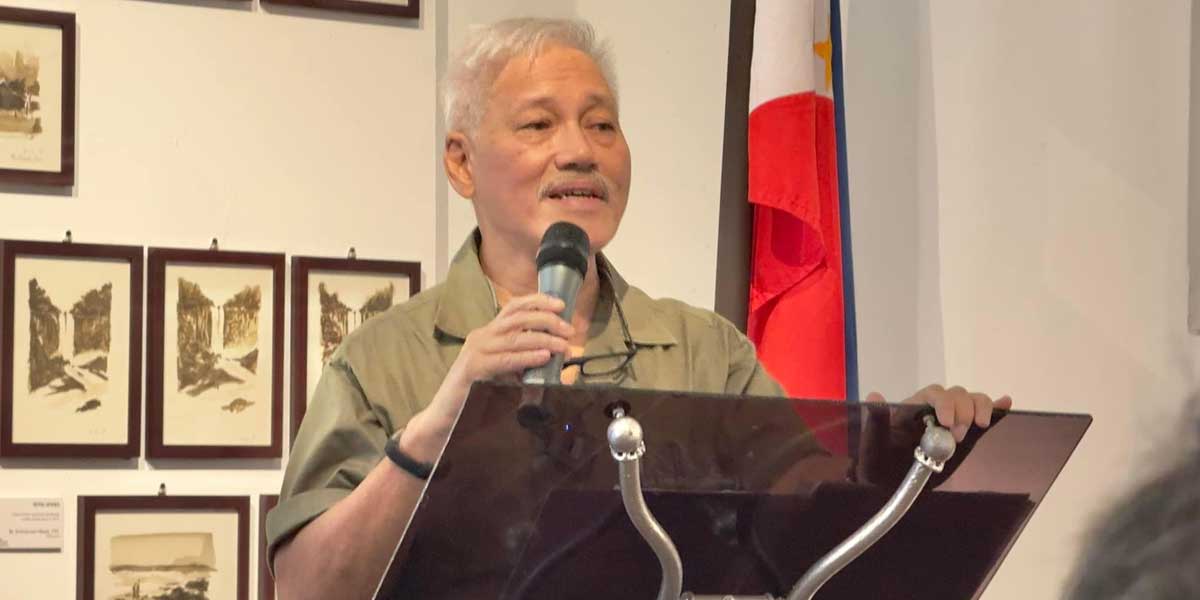By Alex P. Vidal
“The things you do for yourself are gone when you are gone, but the things you do for others remain as your legacy.” – KaluKalu
FIVE years before Martin Luther was to begin to shake the very foundation of the Roman Catholic Church, the great Renaissance painter and humanist Michelangelo had just finished decorating one of its ceilings in October 1521.
“And what a ceiling it was!” exclaims Portland-based Ronald B. Allen, professor of Old Testament and Exegesis in The Majesty of Man.
The Sistine Chapel in Rome, named for Pope Sixtus IV who had begun its construction in 1473, has a ceiling that measures approximately 133 feet by 43 feet, with the crown of the vault some 70 feet above the pavement.
In conditions of terrible discomfort, Allen points out, the great artist Michelangelo spent nearly four years painting in the fresh plaster on the ceiling.
“He lay on hard scaffolding board, breathing intolerable air and having eyes and skin constantly inflamed with plaster dust. All the while, the impatient Pope Julius II would periodically climb the scaffolding and threaten to toss the master to the ground if he did not finish his work more quickly,” narrates Allen.
The formal unveiling took place on October 31, 1512. What an event in the history of man this unveiling was—one of the finest artistic achievements of the Renaissance.
Here Christian theology and humanism learned to hold hands.
-o0o-
In his recital of the significance of this event, Charles H. Morgan says “Michelangelo had joined two powerful philosophies, the Christian ethic and the perfect human, at the moment of their most sympathetic coexistence.”
This blending of the Christian and the human strains was perhaps nowhere more evidence than in Michelangelo’s portrayal of the Creation of Man.
One of the most famous panels of the masterpiece is the scene of Adam reclining inertly on a brown field, his left arms stretched out languidly over his upraised left knee.
Rushing toward him is God, surrounded by storm and cloud, attended by cherubim, and stretching out his hand in a dynamic gesture to the extended finger of Adam.
Our attention is drawn to the rushing power of the finger of God and the small space left between God’s finger and that of man.
“In this painting,” suggests Allen, “we are there a microsecond before the giving of life!”
What are we to make of this imagery? Morgan sees in it the notion that the church had given nourishment to humanism, and that in this painting they both meet on an equal scale.
Despite the tranquility of the scene, Morgan senses the irony in the painting, for a struggle was about to burst out between the church and humanism in which the power of God would be challenged by man whom heaven had empowered.
Allen says another view of the significance of the Creation of Man fresco is presented by the renowned American biblical theologian Samuel Terrien of Union Seminary, New York.
-o0o-
“Dr. Terrien, in a meeting of the Society of Biblical Literature in San Francisco several years ago, observed that there is another figure in the painting in addition to God, Adam, and the cherubim,” Allen observes. “This other figure is a beautiful woman whose head is nestled in the left arm of God, and who looks with anxious interest on man whom God was enlivening.”
We almost miss this woman because of our interest in the latent energy in the space between the finger of Adam and the finger of God.
“But there she is!” Allan stresses. “And her presence causes us to ask, Who is she? Is she the as yet unformed Eve, awaiting the awakening of need for her in her mate?” Is she, as some Catholics have imagined, the Blessed Virgin Mary, anticipating a significant day long in the future when God would have a ministry of mystery for her?
Terrien brushes away these and other conceptions with his great discovery: This woman is wisdom. It was with his arm around wisdom that God created man, his finest creature.”
Allen observes further: “I suspect that Morgan’s point of view more accurately represents art history. But I am convinced that the viewpoint of Terrien is the one who need in order to understand theology rightly. For this painting points us to one of the most significant elements in our understanding of what it means to be truly human: We were created by God to be wise.”
(The author, who is now based in New York City, used to be the editor of two dailies in Iloilo.—Ed)






















